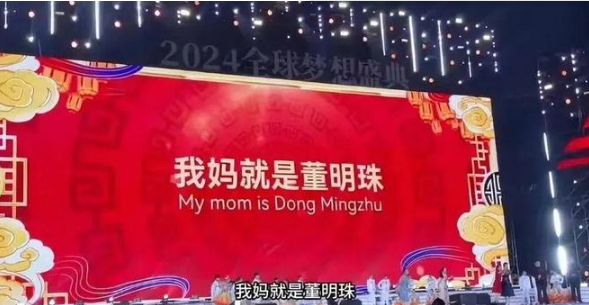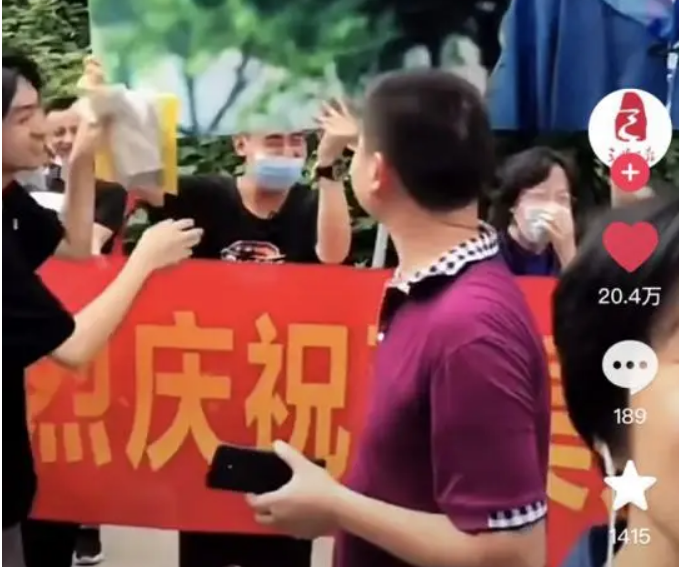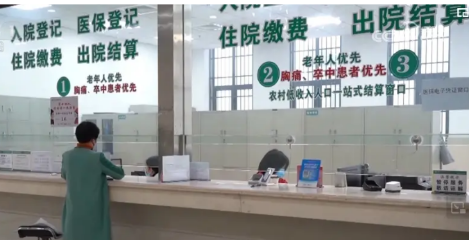Wistar Scientists Develop Novel Antibody Treatment for Kidney Cancer

PHILADELPHIA, PA, June 04, 2024 (GLOBE NEWSWIRE) -- Advanced clear cell renal cell carcinoma (ccRCC) is a deadly form of kidney cancer with few treatment options; even with new immunotherapies, only around one in 10 patients ultimately survive.
Antibody therapies called bispecific T cell engagers (BTEs) have emerged as effective treatments for some blood cancers but have been more difficult to develop for solid tumors. While clinically successful, first-generation BTEs suffer a short half-life. Now, Wistar scientists have built upon BTE technology to develop new and improved recombinant and synthetic DNA versions of therapeutic antibodies that target CA9, called Persistent Multivalent T Cell Engager (CA9-PMTE), that shows promise in pre-clinical models as a potent, long-lasting treatment against ccRCC.
In this study, the researchers also demonstrated that the more potent therapy could be delivered using synthetic DNA, which allows therapeutic production directly in patients. “The big takeaway is that there may one day be a promising new therapy for kidney cancer that has a mechanism of action that would be compatible for combination with checkpoint inhibitors, which is the current therapy of choice for this type of cancer,” said first author Ryan O’Connell, a predoctoral trainee in the Weiner lab at The Wistar Institute’s Vaccine & Immunotherapy Center. “What’s more, this improved bispecific antibody is outperforming the traditional bispecific antibodies in our studies, both in efficacy for treating ccRCC and in the approach’s ability to last much longer in the body, thus potentially being treatment-sparing.”
One reason clear cell renal cell carcinoma is so difficult to treat is because it is a so-called “cold” tumor — one in which cancer cells are unrecognizable by immune cells. This means that killer T-cells — a type of immune cell that seeks out and destroys diseased cells and cancers — are unable to recognize the tumor cells. As a result, immunotherapies that work by enhancing the T cells’ killing potency without improving their ability to bind to their targets are less effective against cold tumors.
These new forms of bispecific T cell engagers overcome this problem by functioning like “double-sided tape,” O’Connell explains. One side of the drug molecule binds to the T-cell, while the other side is engineered to bind to the specific type of tumor cell being treated; these molecules are “bispecific” because each end of the molecule is specific to one of two targets, the T cells and the cancer cells. This empowers the T-cells to attack and kill the cancer — even in cold tumors — by supplementing their ability to bind to the tumor.
But while BTEs are a promising new therapy for many difficult-to-treat cancers, they do have some limitations, including a short half-life (which is how long it takes for the active dose of a drug in one’s body to decrease by 50%). Most BTE drugs break down quickly, sometimes within a matter of hours, which means they are only effective for a short time.
In preclinical models, the team tested the efficacy of novelly designed anti-ccRCC BTE variants developed to enhance the interactions between T cells and the targeted cancer. These were developed to be delivered using synthetic DNA technology — a method of delivery that allows the body to assemble the desired drug design from DNA-based code themselves. The researchers compared traditional BTEs with a newer format design termed persistent BTEs (PBTEs), which have a longer half-life but use the same targeting system as older BTEs. They found that, while the initial PBTEs did last longer than the traditional BTEs, the new design reduced the overall anticancer potency.
The research team then created a new molecule by taking an existing PBTE and adding additional binding domains to better “see” and bind to the cancer. This novel, alternative design — called a persistent multivalent T cell engager (PMTE) — proved to be highly potent while also maintaining a longer half-life than the traditional BTE design.
Senior author David Weiner, Ph.D., executive vice president of The Wistar Institute and director of the Vaccine & Immunotherapy Center, said the new format represents the potential for an important new tool for enhancing cancer therapy.
“Bispecifics in general are an important technology that offer significant advantages in on-target anticancer potency,” he says. “The new PMTEs appear not only more effective at binding to tumor cells and killing the cancer, but they also require a much lower dose and, we have reason to believe, a lower frequency of therapy — which could potentially translate to improved outcomes and a better patient experience at a lower cost.”
The researchers are now studying these new PMTEs in combination with other immunotherapies as well as expanding designs to additional difficult-to-treat cancers.
Co-authors: Ryan P. O’Connell and Daniel Park of The Perelman School of Medicine at the University of Pennsylvania and The Wistar Institute; Kevin Liaw, Pratik S. Bhojnagarwala, Devivasha Bordoloi, Nicholas Shupin, Danie Kulp, and David B. Weiner of The Wistar Institute; Nils Wellhausen of The Center for Cellular Immunotherapies at the Perelman School of Medicine; Carl H. June of The Center for Cellular Immunotherapies at the Perelman School of Medicine and The Parker Institute for Cancer Immunotherapy at The University of Pennsylvania; and Chris Chuckran of LUMICKS
Work supported by: National Institutes of Health grants T32 CA11529915 and P30 CA010815; The Jill and Mark Fishman Foundation; the W.W. Smith Charitable Trust; and Inovio Pharmaceuticals.
Publication information: “Format-tuning of in vivo-launched bispecific T cell engager enhances efficacy against renal cell carcinoma,” published in Journal for Immunotherapy of Cancer (JITC)
ABOUT THE WISTAR INSTITUTE
The Wistar Institute is the nation’s first independent nonprofit institution devoted exclusively to foundational biomedical research and training. Since 1972, the Institute has held National Cancer Institute (NCI)-designated Cancer Center status. Through a culture and commitment to biomedical collaboration and innovation, Wistar science leads to breakthrough early-stage discoveries and life science sector start-ups. Wistar scientists are dedicated to solving some of the world’s most challenging problems in the field of cancer and immunology, advancing human health through early-stage discovery and training the next generation of biomedical researchers. wistar.org.
Darien Sutton The Wistar Institute 215-870-2048 dsutton@wistar.org
- 春游江淮丨“樱”为昭亭路,爱上宛陵城!
- 上海职工健身驿站丨舒华体育倾力共筑城市新地标
- Music Licensing
- MUFG Investor Services的资产管理规模超过1万亿美元
- ANESSA在亚洲12个国家/地区启动“ANESSA阳光项目”,支持儿童的全面健康
- 菳禾森林防火语音宣传杆的多功能特点和应用范围
- Masimo创始人兼首席执行官Joe Kiani将在智利举行的全球患者安全峰会上谈论人工智能
- Prolia ® 和Xgeva ® (denosumab)生物仿制药候选药物HLX14的3期比较临床研究达到主要终点
- C.K. McWhorter Endows Maison Goyard With Esteemed McWhorter Family Trust Warrant Of Excellence
- 泰山钢铁集团与中国二十二冶集团签署战略合作协议
- 防液体喷溅防护服,B级大面屏防化服,呼吸器内置式防化服,锦勇
- 广州沥心沙大桥事故3名失联人员已全部找到 均无生命体征
- 防静电耐酸碱服【织物类酸碱防护服,非织物类酸碱防护服】锦勇
- 30载时光记“益” 共绘音乐盛宴 天津体彩登陆泡泡岛音乐与艺术节
- 平安产险北京分公司:打击经济犯罪+投资者保护,警企联合维护合法权益
- 提升客户服务体验,打造高效云呼叫中心系统
- 2024美术界春晚作品展播 杨东平
- 合势而上 聚力成峰 |“我店平台616购物嘉年华发布会”圆满落幕
- 传承中医药 国人更健康
- 第二届“机工大众好书”金齿轮奖十大好书正式发布!
- 问止中医荣膺新华社《中国名牌》2023企业ESG社会贡献度优秀案例
- 足力健老人鞋入选“创新型企业”,以创新引领银发经济新篇章
- CAT1022ZD4I-45T3: Enhancing System Integrity with High-Performance EEPROM Memory | ChipsX
- 复旦国金-东森金融科技与美业大健康产学研基地发布
- 宁波干冰清洁服务干冰生产厂家干冰
- MMI在 C 轮融资中筹资1.1亿美元
- 哪里有食用明胶,明胶厂家首选金达明胶-你值得信赖的厂家
- 香港全面撤销所有楼市管理措施:取消买家印花税、额外印花税
- Dexter King 被任命为 TOM FORD BEAUTY 高级副总裁兼全球总经理
- 馨漫之舍唤醒肌肤的年轻记忆 让肌肤重回年轻态
推荐
-
 王自如被强制执行3383万
据中国执行信息公开网消息,近期,王自如新增一
资讯
王自如被强制执行3383万
据中国执行信息公开网消息,近期,王自如新增一
资讯
-
 中央气象台连发四则气象灾害预警
暴雪橙色预警+冰冻橙色预警+大雾黄色预警+
资讯
中央气象台连发四则气象灾害预警
暴雪橙色预警+冰冻橙色预警+大雾黄色预警+
资讯
-
 海南大学生返校机票贵 有什么好的解决办法吗?
近日,有网友在“人民网领导留言板&rdqu
资讯
海南大学生返校机票贵 有什么好的解决办法吗?
近日,有网友在“人民网领导留言板&rdqu
资讯
-
 抖音直播“新红人”进攻本地生活领域
不难看出,抖音本地生活正借由直播向本地生活
资讯
抖音直播“新红人”进攻本地生活领域
不难看出,抖音本地生活正借由直播向本地生活
资讯
-
 产业数字化 为何需要一朵实体云?
改革开放前,国内供应链主要依靠指标拉动,其逻
资讯
产业数字化 为何需要一朵实体云?
改革开放前,国内供应链主要依靠指标拉动,其逻
资讯
-
 中国减排方案比西方更有优势
如今,人为造成的全球变暖是每个人都关注的问
资讯
中国减排方案比西方更有优势
如今,人为造成的全球变暖是每个人都关注的问
资讯
-
 一个“江浙沪人家的孩子已经不卷学习了”的新闻引发议论纷纷
星标★
来源:桌子的生活观(ID:zzdshg)
没
资讯
一个“江浙沪人家的孩子已经不卷学习了”的新闻引发议论纷纷
星标★
来源:桌子的生活观(ID:zzdshg)
没
资讯
-
 奥运冠军刘翔更新社交账号晒出近照 时隔473天更新动态!
2月20日凌晨2点,奥运冠军刘翔更新社交账号晒
资讯
奥运冠军刘翔更新社交账号晒出近照 时隔473天更新动态!
2月20日凌晨2点,奥运冠军刘翔更新社交账号晒
资讯
-
 周星驰新片《少林女足》在台湾省举办海选,吸引了不少素人和足球爱好者前来参加
周星驰新片《少林女足》在台湾省举办海选,吸
资讯
周星驰新片《少林女足》在台湾省举办海选,吸引了不少素人和足球爱好者前来参加
周星驰新片《少林女足》在台湾省举办海选,吸
资讯
-
 透过数据看城乡居民医保“含金量” 缴费标准是否合理?
记者从国家医保局了解到,近期,全国大部分地区
资讯
透过数据看城乡居民医保“含金量” 缴费标准是否合理?
记者从国家医保局了解到,近期,全国大部分地区
资讯

